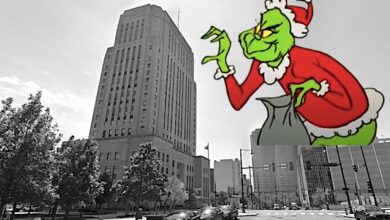Everyone’s talking about it. The fall colors seem more vibrant this year than in recent memory. Trees around the region have exploded into a dazzling array of reds, oranges, yellows and even purples in a canvas of brilliant fall foliage.
Jonathan Tasler is a semi-professional photographer who regularly shoots landscape scenes around town. He recently noted the autumnal brillince he was seeing.
“It’s been more vibrant than years past,” Tasler told local radio station KCUR. “All over Kansas City is fantastic to shoot right now. I’ve really been drawn to the neighborhoods south of Loose Park with the old, tree-lined roads. It’s been a great month to be a photographer.”
Lydia Ruddy agrees this fall has been special. She works at Family Tree Nursery in Overland Park.
“It’s gorgeous. I find myself constantly swinging my head around when I’m driving and almost running off the road,” she said. “I’ve probably taken a hundred pictures of the tree in my front yard because it’s turning this beautiful bright orange.”
So, what’s behind this season’s palette profusion? Ruddy says it starts with the weather.
“The past few years we’ve had warmer falls, and the trees have gone straight to brown, straight into dormancy,” she said. “This year, we’ve had cooler temperatures and more rain and we’re now getting that good color.”
Turns out the vibrant pigments we associate with fall are present in leaves year-round, but during the spring and summer, they’re masked by the green color produced by chlorophyll — the chemical that helps trees convert sunlight into sugars. When colder temperatures arrive in the fall, chlorophyll breaks down, revealing the other colors.
Dennis Patton, a horticultural agent with Kansas State University’s Research and Extension Office in Johnson County, says certain recent weather patterns have been espeically agreeable to locking in the bright hues of fall.
“We’ve had sunny days, which help leaves keep producing sugars, but then we have cooler nights, which trap those sugars in the leaves. When it cools, chlorophyll breaks down and the other pigments can be seen,” he said.
Patton noted that after a historic bout of rain in early October there has been very little severe weather, which has helped dying leaves cling to their branches longer.
“We haven’t had outragously windy days or heavy rains,” he said. “But if we get a wet, heavy rain with some wind behind it, they’ll start coming down pretty fast.”
All the more reason to enjoy the foliage while you can. But, if the rain does come, you can always head south to catch them again in Arkansas where fall comes a week or two after our area.







